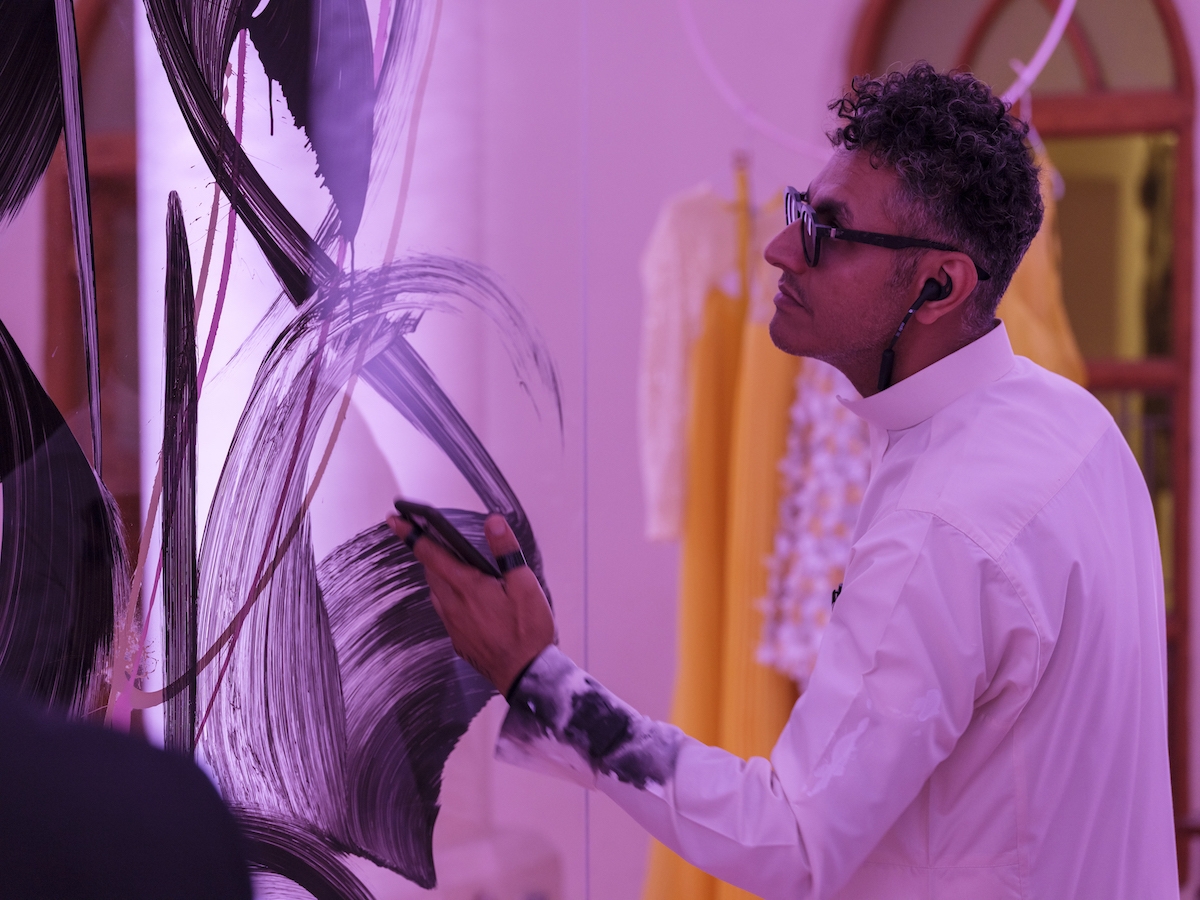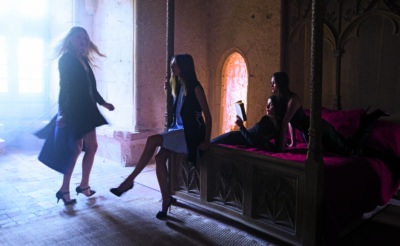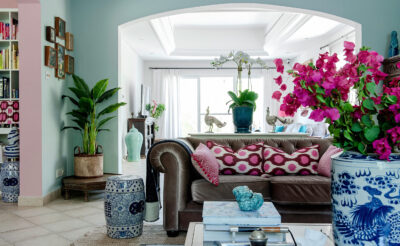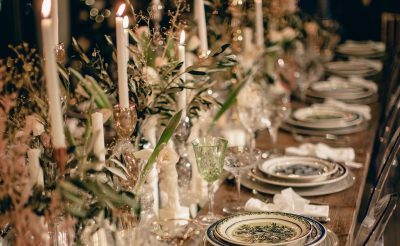In conversation with seasoned collectors, long-time gallerists and museum-placed artists for insider advice on how to commission artwork in the region
Consider this tableau vivant: two figures boyishly perched on the edges of vinyl chairs, one in well-pressed trousers and the latest loafers, by invitation of the other. Here, in a warehouse-turned-studio compound, within its cracked concrete walls, there’s frank and attentive chatter, talks of his private world, the artistic process and its genesis.
This conversational pinball is in the company of paintings-in-progress, paintings that have been tucked away, half-cultivated sculptures, preparatory sketches pinned to boards, hurried studies, makeshift materials, racks of rough maquettes and peculiar reading choices stacked in irregular size order by a worn-out velvet couch, which perhaps served the purpose of sleep more than it did seating. This is a tableau familiar to the collector that has made the most immediate, first-hand investment in an artist: time.
And so, after thorough digestion of the artist’s vision, be it in the form of studio visits, frequent attendance to exhibitions or strong relationships with their art dealers, commissioning is the next, most natural step for the time-invested collector.
Aakif Habib, a contemporary art collector of international tastes with a twenty-four year habit tells MOJEH, “Commissioning art is a very time and thought-intensive process rather than just an impulse purchase. For me, it starts with admiration for a certain style or the artist himself.”
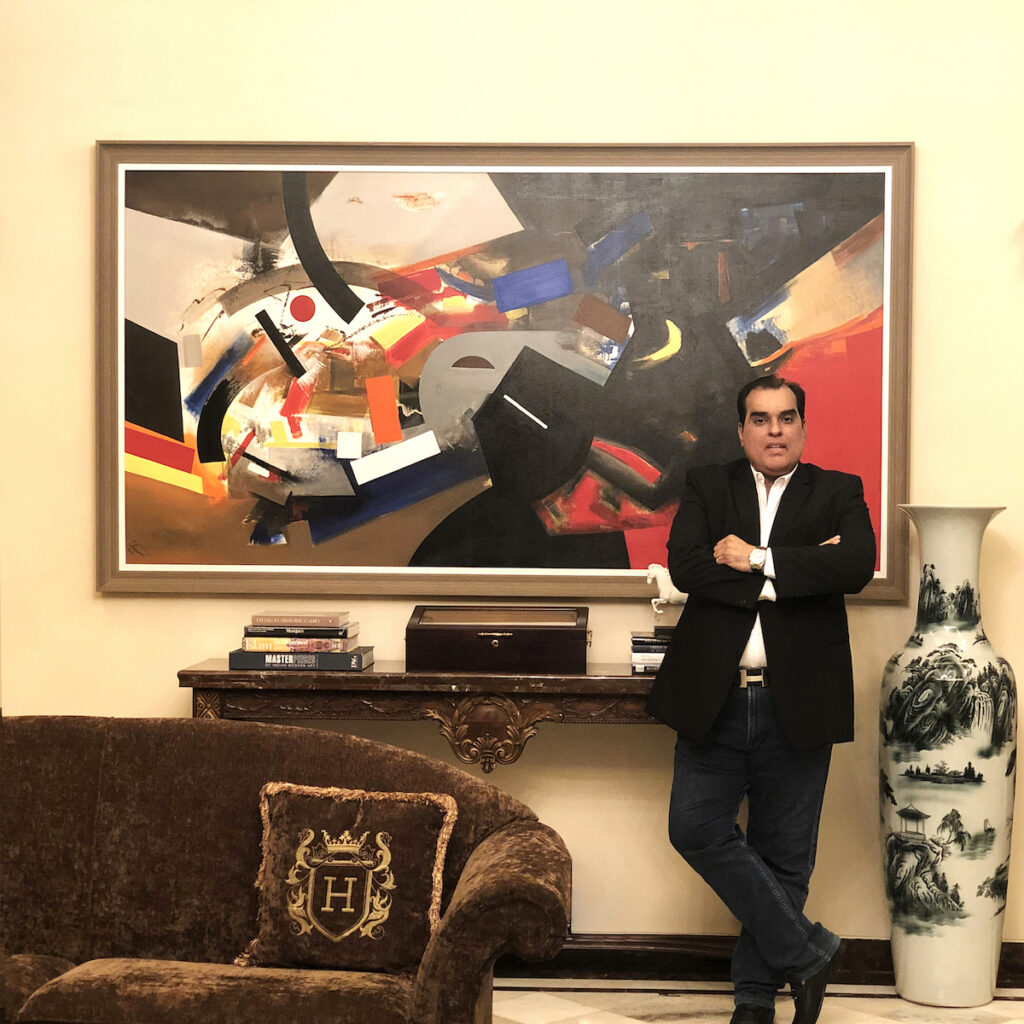
Aakif Habib has been collecting and commissioning art for over 24 years
Having recently commissioned and welcomed two works into his home by emerging Iranian artist, Yalda Ostowar and Austrian pop-artist, Helmut Zwerger, Aakif recounts the process.
“I met both artists prior to commissioning the pieces. I was introduced to Helmut on one of my trips to Europe a few years back, and his interpretation of forms and figures really intrigued me. Yalda too has such skill in her brush, that her pieces exude power and passion. I usually spend some time with the artist and then define the scope of work based on both our visions and motivations. Helmut was even hosted at my holiday home for a few months, and that definitely made the process more engaging and rewarding. In the end, I invest in the person first, and in the artwork later.”
Knowing the person behind the artist is fundamental as commissions are as “exclusive and personal as it can get,” says Aakif. “Commissioning art is a process that involves a substantial amount of time, money and most importantly, emotions. My advice to those considering a commission is to get to know the artist at some level, and see that it is not just their creations that resonate with them, but also that their wavelength is in sync. While one might have their most desired piece of art to commission, finding the right artist for it is of utmost importance.”
Asmaa Al-Shabibi, director and co-founder of Lawrie Shabibi, a contemporary Dubai-based gallery of eighteen years, adds that commissioning offers opportunities that a formal series does not, both in scale and concept. Collectors may opt for commissions due to their desire to have something site-specific, or a very special piece that stands apart from the other works.
“Most artists don’t make large-scale public works, for example, unless they have been requested to do so for a specific site or purpose,” says Asmaa. Artists also benefit from the vastness of possibility that is involved in commissioning. “It allows them to make works that they would not ordinarily make – the site or location may make them think more critically about what they are producing,” Alma notes.
Once the collector has approached the gallerist or artist, they will have already identified a space – either in their home, office, park or garden and have an artist in mind for the piece, or send out an open call.
“The artist will then visit the site and come up with some drawings and concepts which are agreed alongside the budget. In some instances, the artist may find some elements have to be adjusted or changed –this is a creative process, so some flexibility is to be expected. The payment is usually agreed upfront,” explains Asmaa.
Logistical considerations will vary across the mediums of sculpture, works on paper, whether its public or private – the process works on a case-by-case conversation. “There will be a lot more involved in sculpture, in its production and installation, compared with works on paper. And the more successful public works will factor in budget, suitability of material for the location, experience of the artist in making public artworks, and understanding how the public will engage with it,” says Asmaa.
Dale Chihuly, who many Dubai residents and tourists may recognise as the artist behind the dazzling 18-metre tall blown glass sculpture in the lobby of The Atlantis, Palm Jumeirah, is no stranger to public installations – in fact, it’s what he’s known for.
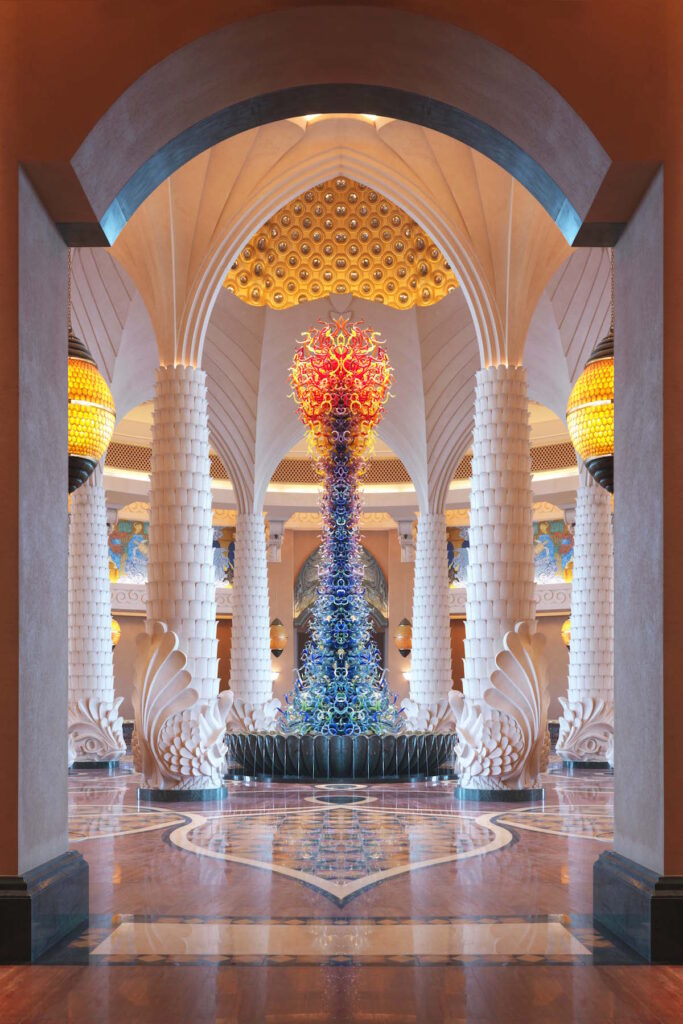
Dale Chihuly’s 18-metre high, glass blown sculpture stands in the lobby of The Atlantis, Palm Jumeirah
Throughout his fifty year career, his surreal glass works have featured in 225 permanent museum collections globally, creating iconic and landmark installations such as the Persian ceiling at Bellagio Las Vegas and the Rotunda chandelier in the Victoria and Albert museum, as well as the focal point of blockbuster botanical exhibitions, including his recent showcase at London’s Kew Gardens.
Ranked as ‘the world’s most visited living artist in museums’, despite his work being sought after by top institutions and collectors, commissioning work by an artist of this grade is still accessible, says Paul Green, president of London’s Halcyon Gallery.
“With regards to the pricing of Chihuly’s work, for a living artist who has such an incredible audience, Dale has always wanted to keep his work within reach of as many people as possible.”
Dealing Dale’s contemporary glass sculptures for over a decade, Paul explains that interest in Dale’s pieces grow steadily with each year that passes.
“The exhibition at Kew Gardens was a spectacular success, breaking records in terms of visitor numbers. All of this, of course, creates additional demand for Dale’s work around the world, and for those who are lucky enough to commission something to be placed either in a private or public environment. For an artist that is so famous and so loved, to produce work of such wonderful value brings incredible joy to those that own and view his pieces.”
Previous Chihuly commissions have been driven by philanthropy, such as the 2017 installation at the Fred and Pamela Buffett cancer centre in Nebraska, designed to apply the therapeutic value of art.
“Because of the nature of cancer treatment, the centre didn’t want any flowers, or flora and fauna that could bring any infection into the environment,” explains Paul. “Part of the reason people want to visit the museum in Seattle is because colour has a physical and mental effect on your environment, and, subsequently, your wellbeing.”
“Dale understands this reaction. When you see people lying under his glass ceilings, or in the case of the Buffet cancer centre, the rain walls they created in blue glass, they have an effect upon the individual – it brings you peace. There is a reason why great art is great art: because it resonates. And Dale’s work resonates and has an effect upon you,” says Paul.
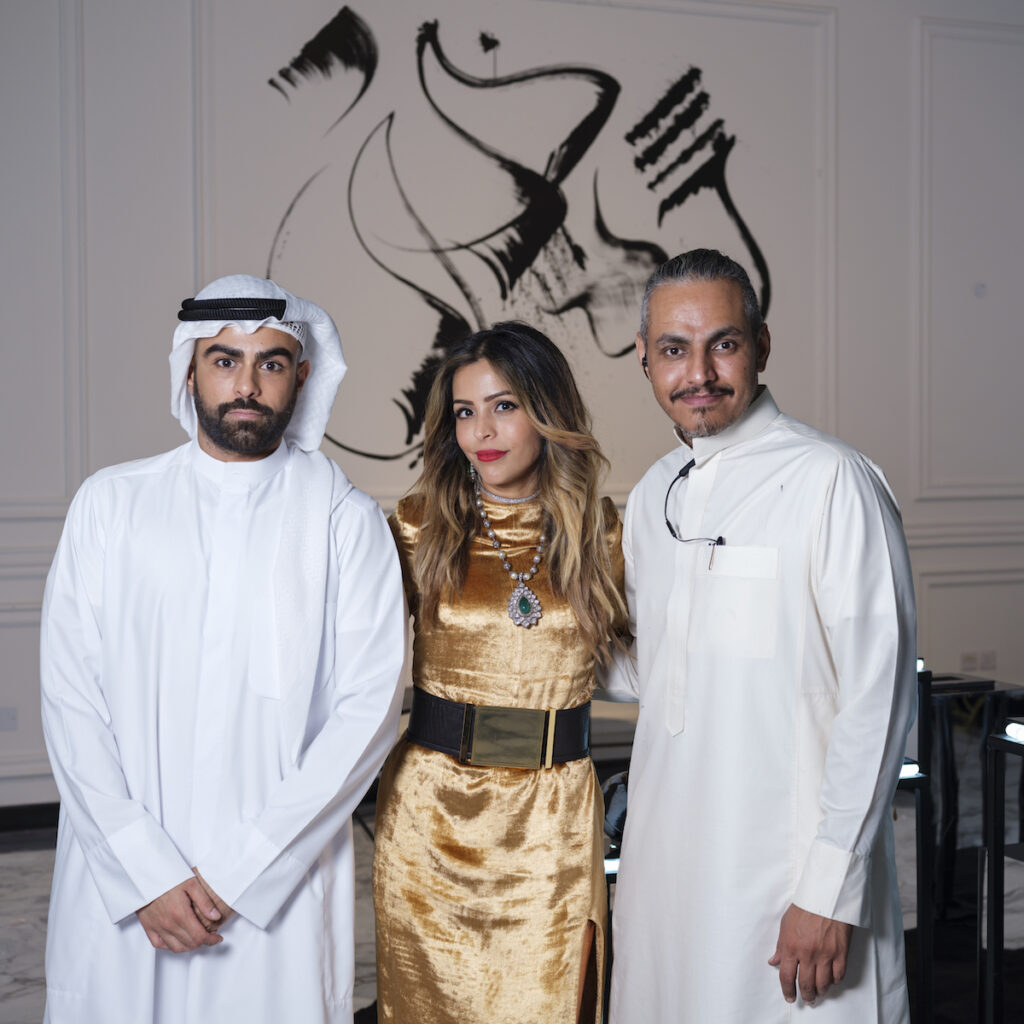
Marzook founders, Shouq Al-Marzouq and her brother, Fahad, with calligraffiti artist, Nugamshi
Commissioning art in the Middle East can also be a means of bridging disciplines. Shouq Al-Marzouq, who co-founded luxury accessories brand Marzook with her brother Fahad, has previously engaged in artist-fashion collaborations, such as the 2017 and 2018 capsule collections with Saudi calligraffitti artist, Nugamshi, and is an avid supporter of the synergies of “wearable art”.
After all, the shared history is there; Andy Warhol’s 1966 colour and celebrity-charged collaborations with Yves Saint Laurent; Yayoi Kusama’s 2012 polka-dot frenzy with Louis Vuitton and Damien Hirst’s 2013 kaleidoscopic collection with Alexander McQueen are just a few of the high-profile collaborations melding fashion and art with beautiful, far-reaching results.
“Marzook is a hub for artistic expression, whether through design, collaborations, or trunk shows,” says Shouq. “Fahad and I were looking for an artist who shared our artistic vision. It was important for our brand to show our clients out-of-box ideas we could create.”
A performance artist famed for his abstraction of calligraphic forms, Nugamshi always performs wearing his traditional white Saudi thobe, topped off with headphones – often listening to heavy metal or rock music as he works.
“I have always been fascinated by the creative energy of the fashion industry and have greatly enjoyed the opportunity to express my art in that medium,” says Nugamshi, who creates his calligraffiti at a gigantic scale, using instruments such as brooms and spray paint over traditional brushes and pens.
“I had commissioned Nugamshi for a special piece for my house,” says Shouq. “He arrived in Kuwait to work on this large artwork, and Fahad and I immediately found a connection with his work. His dynamic brush strokes were entrancing to watch, and from there, we decided to work on a limited-edition collaboration.”
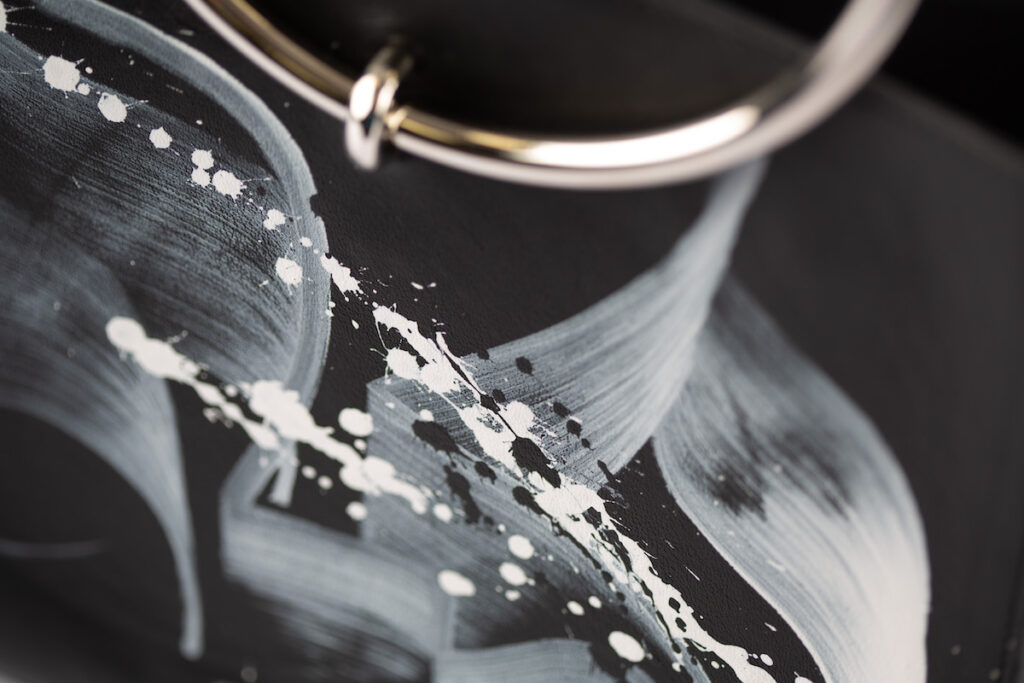
Known for his dynamic brush strokes, Nugamshi uses brooms and spray paints to create his works
“We created two beautiful collections together: Shghaf and Queen of Sheba. For the first collaboration, we had 48 pieces made. Nugamshi would fly to Kuwait a few days before the event, we’d have all his tools ready, and he would work on the bags in his own art studio, which also works as a home office. Our main objective was for him to be comfortable and feel creatively free.”
Describing Nugamshi as softly-spoken and an introvert at heart, while she and her brother are extroverts that love talking to people, Shouq says Nugamshi’s debut for them stopped people in their tracks.
“At the trunk shows, Nugamshi would let his work speak for him, while we would talk about the inspiration behind the collections. Marzook clients loved to see him in action,” she says, smiling.
“The first time he did his live show, I remember people were mingling and talking, and once he started painting, there was a dead silence in the room – complete and utter silence. He usually has his soundproof headphones on, blasting heavy metal music, juxtaposed with soft, instrumental background music that guests can hear. It was magical to watch. The collection sold out in less than two hours.”
Commissioning offers the opportunity not only to create an artistic output, but also presents the opportunity for memory-making and other experiential allures. When an artist unveils the commission, the final state, the work is not merely work.
There are traces of conversations, deliberations and converged ideas that have forged the most intimate work of art. As Shouq explains, friendship and the alignment of concepts were the greatest takeaways from her commissioning experience with Nugamshi.
“Having commissioned for both my private collection and interdisciplinary projects, I would definitely recommend it to collectors that have taken the effort to acquaint themselves with the artist. The emotional value and creative possibility of commissioned works are unparalleled and has resulted in a long lasting friendship with Nugamshi. There really is nothing quite like it,” Shouq enthuses.
This much is clear for those tempted by the process: research and time are the small steps that grow into healthy strides. What are you waiting for?
Read Next: Exploring Public Art in the Middle East
- Words by Zayna Al-Saleh
- Images: Getty Images

